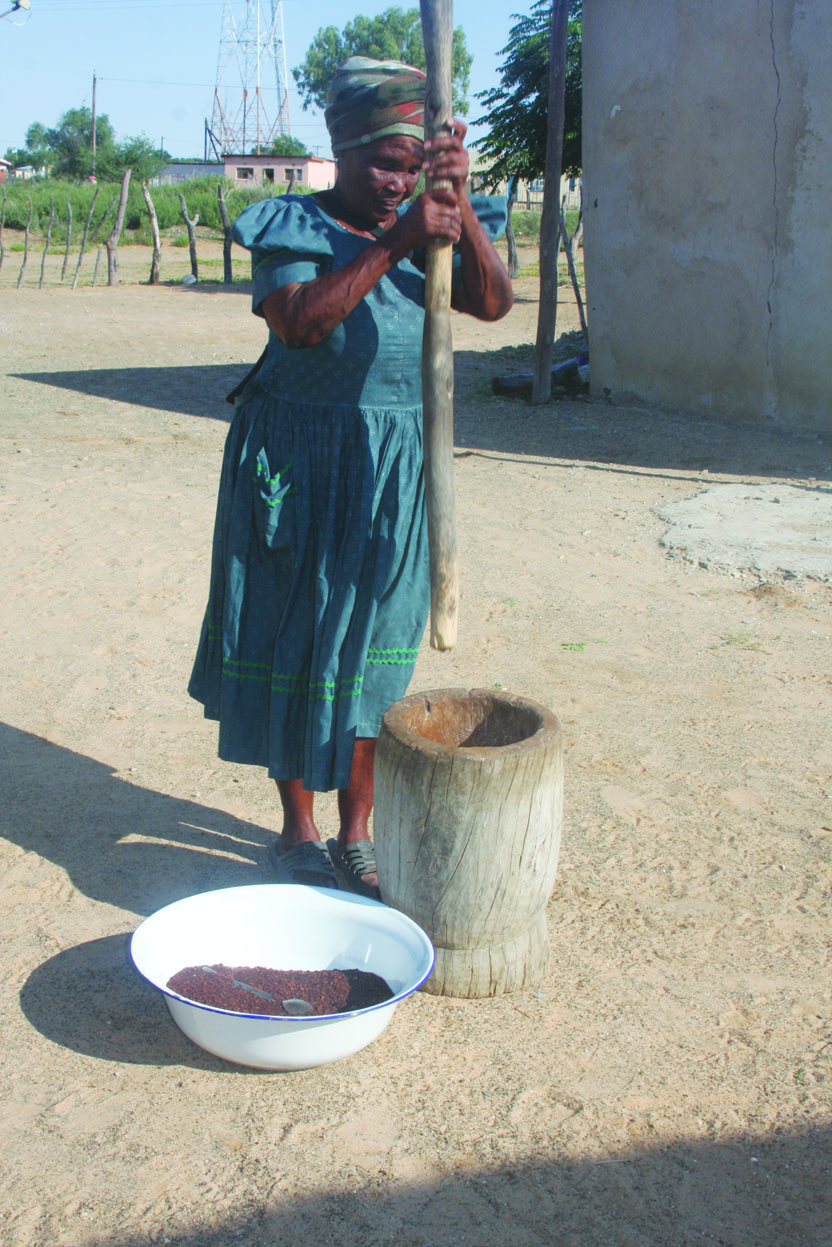Coffee helps pensioner stay out of poverty
24 Mar 2015
Coffee is usually associated with beans. It is said to derive its name from the Arabic phrase ‘qahhwat al-bun’ which translates to ‘wine of the bean’. The phrase was used to form the Turkish and Dutch names, after which the latter (koffie) was used to create the English version which is commonly used today.
Its first origins are traced to East Africa. Though vague, it took years for clear knowledge about the coffee tree to surface. It has always been known to drive away fatigue and create alertness in a person’s mind, a property which it still carries to date.
Even though most markets are currently awash with fancy processed coffee brands, a pensioner in the Southern District has ventured into unchartered ground to invent her own ‘coffee’. Instead of beans, 68 year old Tshepo Tokong of Kokong village makes the beverage with the indigenous Motlopi tree notwithstanding that it does not have all coffee properties.
However, despite the difference, almost everyone has resorted to calling this Motlopi hot beverage ‘coffee’ because of the colour and the fact that it is brewed just like real coffee.
What is more interesting is the fact that she is a self-taught ‘coffee’ maker, having acquired the method from another recipe which was used back in the days.
“I used to watch our parents as they made porridge from Motlopi roots. As years went by, I became innovative and tried to use the same method to make a different product and as you can see it worked. I pound these roots and dry them, after which I roast until it becomes brown. I then grind to make fine powder and sieve to remove bigger particles and my coffee is ready for brewing and serving,” she explains.
The intriguing part is that the beverage is purely made from the plant roots, no flavourants or colourants even though Motlopi roots are originally whitish in colour.
It was in 2011 that she started producing motlopi ‘coffee’ in small quantities only for her household, then for others in the village as word continued to spread. Her recipe has since attracted attention from different organisations such as the National Food Technology Research Centre (NFTRC) and Gender Affairs Department, the latter having engaged her on several occasions to impart knowledge to fellow Batswana women.
Even though the Mabutsane Sub-district, through the poverty eradication programme, has supported and encouraged her, she still has challenges including lack of market and appropriate machinery to turn her business venture around.
“I walk long distances to fetch the roots and I usually have to hire a donkey cart to deliver them for me because they are heavy. I also use the traditional method of pounding and it is hard for me and age is catching up with me,” she says with a sombre voice.
Government has provided her with a sealing and wrapping machine for packaging but has not started using them because she is yet to connect electricity to the structure which she uses for the business.
However, she has managed to use the little income from her coffee business to contribute towards connecting electricity in her homestead. The only time she gets to sell her product in large quantities is during market days and Women’s Expo exhibitions.
“I started participating in Women’s Expo in 2012 and I sold everything that I had at the time. The following year I did the same, and I did not only make better profits but also obtained position one in my category. Even though I did not win anything last year, I managed to make huge profits as well,” she explains.
Mma Tokong’s product has received a green light from the country’s assessing body, NFTRC. “We have done product analysis at the lab and the results indicated that the beverage is safe for human consumption.
We also encourage that it be called the Motlopi hot beverage as compared to coffee because it does not have coffee properties,” explains NFTRC senior extension and training officer, Ms Annah Nkwe-Mosele.
She indicates that Ms Tokong was also trained on proper handling and food safety to avoid contamination of the product.
Good management practices, including packaging, she says, can go a long way in ensuring that the product is not prone to contamination, that is why they also advised on using safer methods for packaging. ENDS
Source : BOPA
Author : Kehumile Moekejo
Location : JWANENG
Event : Interview
Date : 24 Mar 2015






